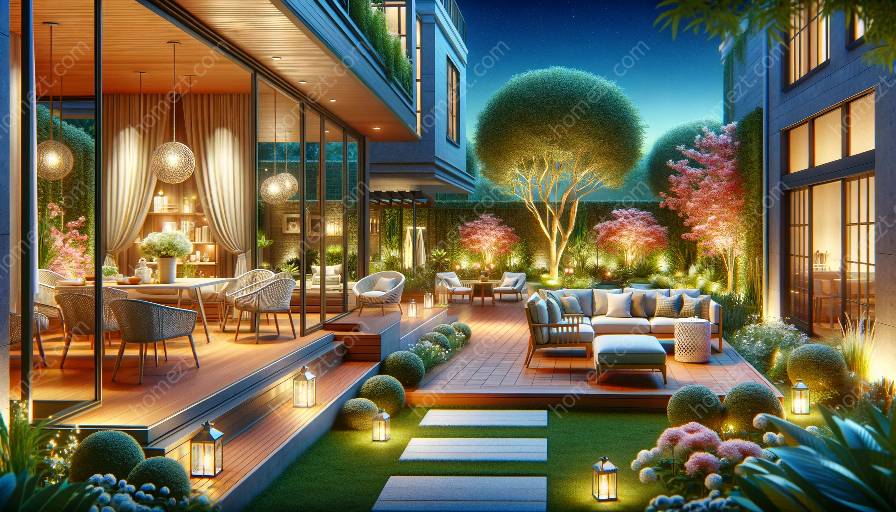Rooftop gardens are a growing trend in outdoor living spaces and garden design, offering unique opportunities and challenges for designers and homeowners. When it comes to interior design and styling, rooftop gardens can also impact the overall aesthetic and functionality of a space. Let's explore the key challenges of designing rooftop gardens and how they intersect with outdoor living spaces and interior design.
1. Structural Considerations
Rooftop gardens require thorough structural assessments to ensure the building can support the additional weight of the garden, planting materials, and drainage systems. This challenge is particularly crucial for older buildings or those with limited load-bearing capacity. Working with structural engineers and architects is essential to ensure the safety and integrity of the building.
Moreover, the design team needs to consider the load distribution and potential impact on the building's foundation, particularly in areas with extreme weather conditions or seismic activity. Innovative solutions such as lightweight planting materials and modular garden systems can help mitigate these challenges while enhancing the overall design flexibility.
2. Access and Maintenance
Access and maintenance are significant challenges for rooftop gardens, as they require proper planning for utilities, irrigation, and ongoing care. Designers must consider how gardeners and maintenance staff will access the rooftop, as well as storage space for tools, equipment, and seasonal plantings.
Integrating efficient irrigation systems, drainage solutions, and automated maintenance technologies can streamline the care of rooftop gardens, reducing the manual labor and potential disruptions to the interior living spaces. Creating sustainable and low-maintenance planting palettes can also contribute to the long-term success of rooftop gardens while aligning with outdoor living and garden design trends.
3. Environmental Factors
Rooftop gardens are exposed to unique environmental factors, including wind, sun exposure, temperature fluctuations, and limited soil depths. Designers need to select plant species and materials that can withstand these conditions while providing visual appeal and functionality.
Integrating windbreaks, shade structures, and microclimate control systems can help mitigate the impact of harsh elements on rooftop gardens, enhancing their suitability for outdoor living and creating comfortable spaces for relaxation and entertainment. Additionally, considerations for water conservation, stormwater management, and ecological benefits are essential for aligning rooftop garden designs with sustainable outdoor living and garden design principles.
4. Aesthetic Integration
From an interior design and styling perspective, rooftop gardens should seamlessly integrate with the overall architectural aesthetic of the building and the surrounding landscape. Balancing the design elements of the rooftop garden with the interior living spaces requires a cohesive approach that harmonizes colors, textures, and visual transitions.
Integrating elements such as outdoor furniture, lighting, and decorative features can enhance the usability and visual appeal of rooftop gardens, creating seamless transitions between indoor and outdoor living spaces. Collaboration between landscape architects, interior designers, and garden specialists is vital to achieve a cohesive and attractive rooftop garden design that complements the building's existing design language.
5. Regulations and Permissions
Rooftop gardens are subject to local building codes, zoning regulations, and permit requirements, presenting a complex challenge for designers and property owners. Navigating the legal and regulatory landscape to secure permissions for rooftop gardens demands thorough knowledge of municipal guidelines and a proactive approach to compliance.
Working with experienced professionals who understand the nuances of rooftop garden regulations can streamline the process and ensure that the garden design meets all necessary standards. Engaging in open communication with local authorities and seeking professional guidance can help avoid potential legal issues and delays in the implementation of rooftop garden projects.
As rooftop gardens continue to gain popularity as modern outdoor living spaces, addressing these challenges with innovative solutions and thoughtful design considerations can create inviting and sustainable environments that enrich the overall quality of life for building occupants and the community.


























